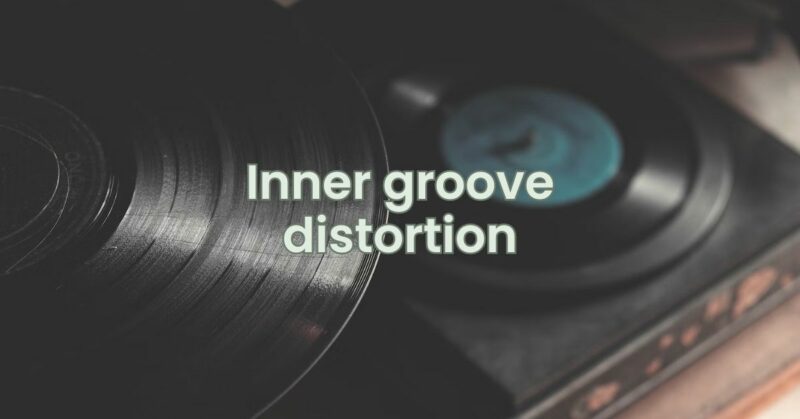Inner groove distortion is a common challenge that plagues vinyl records, especially those with longer playing times or dense musical content. As the stylus approaches the innermost section of the record, sound quality may deteriorate due to various factors. In this article, we will explore what inner groove distortion is, the causes behind it, how to identify its effects, and practical measures to minimize its impact for an improved vinyl listening experience.
What is Inner Groove Distortion?
Inner groove distortion refers to the degradation of sound quality that occurs in the innermost part of a vinyl record’s groove during playback. As the stylus reaches the inner grooves, several factors come into play, causing the audio fidelity to suffer. The symptoms of inner groove distortion can include a loss of high frequencies, reduced clarity, and increased surface noise.
Causes of Inner Groove Distortion
- Reduced Linear Velocity: As the stylus moves towards the center of the record, the linear velocity decreases. This reduction in linear velocity can lead to a decrease in the amount of information that can be accurately reproduced, resulting in diminished high-frequency response and detail.
- Narrow Groove Spacing: The grooves in the inner portion of the record are closer together due to the reduced space available. This tight spacing makes it challenging for the stylus to accurately track the grooves, leading to tracking errors and distortion.
- Physical Limitations: Vinyl records have inherent physical limitations in terms of the amount of audio information they can hold. Longer playing times or dense musical content may require compression or narrowing of the grooves in the inner region, which can contribute to distortion.
Identifying Inner Groove Distortion
Inner groove distortion can be identified by carefully listening to the sound quality of a vinyl record as it approaches the inner grooves. Common signs of inner groove distortion include:
- Loss of High Frequencies: High-frequency content, such as cymbals, vocals, or delicate instruments, may sound muffled or subdued.
- Reduced Clarity: The overall clarity and detail of the music may diminish as the stylus gets closer to the center of the record.
- Increased Surface Noise: Inner groove distortion can accentuate surface noise, including clicks, pops, and crackles.
Mitigating Inner Groove Distortion
While inner groove distortion is an inherent challenge in vinyl records, several measures can help minimize its impact:
- Quality Pressing: Opt for high-quality pressings from reputable sources. Well-pressed records with proper mastering and grooving techniques can minimize distortion.
- Adjust Tracking Force: Ensuring the correct tracking force for your cartridge and turntable can help improve the stylus’ ability to track the grooves more accurately.
- Upgrade Equipment: Investing in high-quality turntables, cartridges, and stylus with superior tracking capabilities can enhance sound reproduction and minimize distortion.
- Shorter Playing Times: Opt for records with shorter playing times per side to reduce the need for excessive grooving compression in the inner grooves.
- Consider Vinyl Size: If possible, choose records pressed on larger vinyl sizes, such as 12-inch LPs or 10-inch records, as they have wider grooves that can accommodate more audio information.
Conclusion
Inner groove distortion is an inherent challenge in vinyl records due to physical limitations and reduced linear velocity as the stylus approaches the inner grooves. While it cannot be entirely eliminated, understanding its causes and identifying its effects can help you make informed decisions to minimize its impact. By choosing high-quality pressings, adjusting tracking force, upgrading your equipment, considering vinyl size, and opting for shorter playing times, you can enjoy a more enjoyable and faithful listening experience, immersing yourself in the warm and authentic sound that vinyl records offer. Remember, embracing the unique qualities of vinyl records, including inner groove distortion, is part of the charm and character that draws music enthusiasts to this beloved analog format.

